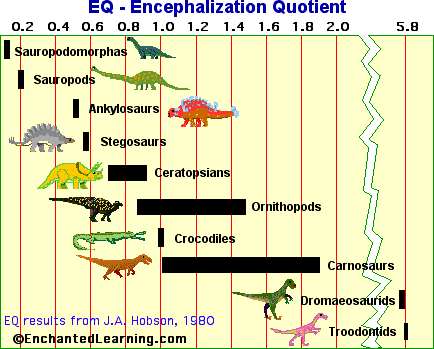Advertisement.
EnchantedLearning.com is a user-supported site.
As a bonus, site members have access to a banner-ad-free version of the site, with print-friendly pages.
Click here to learn more.
(Already a member? Click here.)
HYPACROSAURUS
"Helmet Lizard"
 ANATOMY
ANATOMY
Hypacrosaurus (meaning "under the top lizard") was a large, plant-eating, hollow-crested duck-billed dinosaur (a hadrosaur) similar to Corythosaurus. It was about 30 feet (9 m) long, had almost 40 rows of cheek teeth, a short toothless beak, and a row of short spines coming out of its vertebrae, forming a small fin along its back.
It had a hollow, bony crest on top of its long head in the shape of a helmet flattened on the sides (like the crest of Corythosaurus but thicker). Hypacrosaurus' nostrils went up through the crest. The crest may have been used to make sounds, as a cooling device, courtship displays, and/or as a sense-of-smell enhancer. Males had larger crests than females and juveniles. It had a toothless beak and hundreds of cheek teeth that it used to grind up its food. It walked on two legs, had shorter arms, and a long, heavy tail. It had no natural defenses.
WHEN HYPACROSAURUS LIVED
Hypacrosaurus lived during the Cretaceous period, roughly 72 to 70 million years ago, toward the end of the Mesozoic, the Age of Reptiles. Among the contemporaries of Hypacrosaurus in the late-Cretaceous (in North America) were Albertosaurus, Corythosaurus, Nanotyrannus, Parasaurolophus, Euoplocephalus, Kritosaurus, and Pachyrhinosaurus.
HYPACROSAURUS BEHAVIOR
Hypacrosaurus may have been a herding animal. It lived in humid forests and may have migrated from shorelines to higher ground to reproduce.
EGGS
A nest that may have belonged to Hypacrosaurus was found in Devil's Coulee, near Alberta, Canada. The nest had eight large, round eggs plus the bones of duck-bill embryos, probably those of Hypacrosaurus. The cantaloupe-sized eggs were laid in rows and were probably covered with sand and plant material.
DIET
Hypacrosaurus was an herbivore, eating pine needles, seeds, fruit, twigs, and magnolia leaves.
INTELLIGENCE
Hypacrosaurus was an ornithopod, whose intelligence (as measured by its relative brain to body weight, or EQ) was midway among the dinosaurs.

LOCOMOTION
Hypacrosaurus walked and ran on two legs, and was a relatively fast dinosaur. It may have gone on all fours to forage for low-lying plants.
DISCOVERY OF FOSSILS
 Fossils (mostly skulls) have been found in Alberta, Canada and Montana, USA. Hypacrosaurus was orifinally found by fossil hunter Barnum Brown near Tolman Ferry (near Alberta, Canada) in 1912. Brown named it in 1913.
Fossils (mostly skulls) have been found in Alberta, Canada and Montana, USA. Hypacrosaurus was orifinally found by fossil hunter Barnum Brown near Tolman Ferry (near Alberta, Canada) in 1912. Brown named it in 1913.
CLASSIFICATION
Hypacrosaurus was an Ornithischian dinosaur, the order of bird-hipped, herbivorous dinosaurs. It was an Ornithopod (bird-footed, beaked, bipedal, herbivorous dinosaurs), a hadrosaur (the duck-billed dinosaurs), and a Lambeosauridae (hollow-crested duck-bills, which also includes Bactrosaurus, Corythosaurus, Lambeosaurus, Parasaurolophus, etc.).
The type species is H. altispinus.
 Information Sheets About Dinosaurs Information Sheets About Dinosaurs
(and Other Prehistoric Creatures) |
Just click on an animal's name to go to that information sheet. If the dinosaur you're interested in isn't here, check the Dinosaur Dictionary or the list of Dinosaur Genera. Names with an asterisk (*) were not dinosaurs.
How to write a great dinosaur report.
For dinosaur printouts, click here.For brief dinosaur fact sheets, click here.
Enchanted Learning®
Over 35,000 Web Pages
Sample Pages for Prospective Subscribers, or click below
Click to read our Privacy Policy
Enchanted Learning Search
|
Search the Enchanted Learning website for:
|
Advertisement.
Advertisement.
Copyright ©1996-2018
EnchantedLearning.com ------ How to cite a web page


